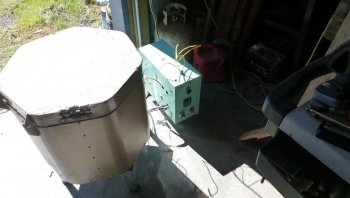Entropy762
Well-Known Member
So in the new knife makers section I showed a blade I made out of O1. It was "heated treated" in my little two brick forge and tempered in a toaster oven. The Knife Dog LRB suggested I need to do more research on the heat treatment of O1. So taking the advice from LRB it seems I need to give O1 a soak time to get the best results out of the steel. Well the two brick forge isn't going to work. I had all the stuff to cobble together an HT oven. I know that using the pottery kiln may be less than ideal since it opens from the top. It may work for now. So the manual for the PID is giving me grief. The PID is an Auber SYL 2352 with the ramp, fuzzy logic, bells and whistles, ect. So my plea for help is how do I program this thing? I know this is a general question. Any help would be greatly appreciated.
Thanks,
Jake
Thanks,
Jake

